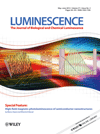
LUMINESCENCE
metrics 2024
Fostering Collaboration in the World of Light
Introduction
LUMINESCENCE is a premier international journal published by WILEY, dedicated to advancing the field of luminescence and its applications across various scientific disciplines. With an ISSN of 1522-7235 and an E-ISSN of 1522-7243, this journal plays a pivotal role in disseminating high-quality research from 1997 to 2024. Positioned in the <> Q3 quartile within Biophysics and Q2 in Chemistry (miscellaneous), LUMINESCENCE ranks #37 out of 111 in its chemistry category and #57 out of 152 in biophysics, reflecting its significant impact in these domains. The journal facilitates open access, enabling wide visibility and engagement with groundbreaking research findings. Aimed at researchers, professionals, and students alike, LUMINESCENCE serves as a vital platform for sharing innovative studies and fostering collaboration in luminescence phenomena, thereby enhancing our understanding and utilization of this critical aspect of modern science.
Metrics 2024
 0.45
0.45 3.20
3.20 2.70
2.70 54
54Metrics History
Rank 2024
Scopus
IF (Web Of Science)
JCI (Web Of Science)
Quartile History
Similar Journals
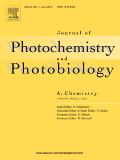
JOURNAL OF PHOTOCHEMISTRY AND PHOTOBIOLOGY A-CHEMISTRY
Transforming Understanding Through Light and ChemistryJOURNAL OF PHOTOCHEMISTRY AND PHOTOBIOLOGY A-CHEMISTRY is a prestigious peer-reviewed journal published by Elsevier Science SA, focusing on the interdisciplinary fields of photochemistry and photobiology. Established in 1987 and set to span to 2025, the journal has earned a notable reputation, currently ranking in the Q2 quartile in Chemical Engineering, Chemistry, and Physics & Astronomy, as per the 2023 metrics. With an impressive Scopus ranking, including #34 in General Physics and Astronomy and #50 in General Chemical Engineering, it represents a significant platform for researchers aiming to contribute to advancements in these critical areas. While the journal operates under a subscription model, it remains accessible through various academic databases, ensuring that cutting-edge research reaches a global audience. Researchers, professionals, and students are encouraged to explore the latest studies and reviews that explore the interactions of light with chemical processes and biological systems, positioning the journal as essential reading for anyone in the field.

FULLERENES NANOTUBES AND CARBON NANOSTRUCTURES
Advancing Nanotechnology Through Carbon InnovationFULLERENES NANOTUBES AND CARBON NANOSTRUCTURES, published by Taylor & Francis Inc, stands at the forefront of research in the fields of nanotechnology, materials science, and organic chemistry. With an ISSN of 1536-383X and an E-ISSN of 1536-4046, this journal offers a critical platform for disseminating significant findings related to carbon-based nanostructures, materials characterization, and their innovative applications. Recognized for its scholarly impact, the journal enjoys a Q2 ranking in several fields, including Atomic and Molecular Physics, Materials Science, and Organic Chemistry, reflecting its commitment to quality research. Since its inception in 2002, it has maintained a rigorous publication standard and provides open access options, enabling a diverse audience, from researchers to industry professionals, to engage with the latest advancements. The journal's comprehensive scope across converged years until 2024 emphasizes its pivotal role in fostering knowledge in the rapidly evolving realm of nanoscience and nanotechnology. Researchers and practitioners alike are encouraged to explore the cutting-edge research showcased in this vital resource.

SEMICONDUCTORS
Connecting researchers to the world of semiconductors.SEMICONDUCTORS, published by PLEIADES PUBLISHING INC, is a prominent journal that provides a platform for researchers and professionals in the fields of Atomic and Molecular Physics, Condensed Matter Physics, and Electronic, Optical and Magnetic Materials. With an ISSN of 1063-7826 and an E-ISSN of 1090-6479, the journal has been diligently disseminating knowledge since its inception in 1996 and continues to pave the way for innovative research until 2024. Although currently unclassified in the Open Access model, its influence is underscored by its rankings in Scopus, where it ranks in the 21st-22nd percentile across critical scientific categories. SEMICONDUCTORS serves as an essential resource for cutting-edge research, fostering a greater understanding of semiconductor materials and their applications, thereby assisting the scientific community in pushing the boundaries of technology and innovation.
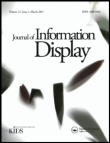
Journal of Information Display
Connecting researchers to the forefront of display innovation.Journal of Information Display is a leading academic journal published by TAYLOR & FRANCIS LTD, dedicated to advancing the field of display technology, which encompasses innovative research on materials and applications in electrical engineering. With its ISSN 1598-0316 and E-ISSN 2158-1606, this esteemed journal has been an open access resource since 2017, enabling widespread dissemination of knowledge and fostering a collaborative environment for researchers worldwide. Recognized for its impact, the journal is classified in the Q1 quartile in both Electrical and Electronic Engineering and Materials Science in 2023, showcasing its significant influence and relevance in these fields. Notably, it ranks highly in Scopus, with a ranking of #166 in Electrical and Electronic Engineering and #115 in General Materials Science, placing it within the top 20% of its category. The Journal of Information Display covers a broad scope from 2000 to 2024, making it a vital resource for professionals, academics, and students who seek cutting-edge research and developments in display technologies.

Chinese Journal of Liquid Crystals and Displays
Fostering Collaboration in Display and Material ResearchThe Chinese Journal of Liquid Crystals and Displays, published by SCIENCE PRESS, serves as a vital platform for researchers and professionals in the fields of electronic, optical, and magnetic materials as well as instrumentation and signal processing. With an ISSN of 1007-2780 and an E-ISSN of 2097-3217, this journal offers a unique perspective on advancements in liquid crystal technology and display innovations, reflecting the dynamic growth of this area of study since its convergence in 2015 through to 2024. Despite currently occupying a Q4 quartile ranking in multiple categories, researchers and industry practitioners will benefit from its publication of cutting-edge research, comprehensive reviews, and insightful discussions. Although not an open-access journal, this publication remains essential for those seeking to expand their knowledge and stay abreast of emerging trends in liquid crystals and display technologies, particularly from a Chinese perspective.
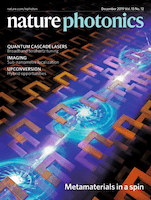
Nature Photonics
Connecting Researchers to the Pulse of Photonics ProgressNature Photonics, published by NATURE PORTFOLIO, stands as a leading journal in the realm of photonics, specializing in the convergence of atomic and molecular physics and optics, as well as electronic, optical, and magnetic materials. Established in 2007 and continuing through 2024, this esteemed journal boasts an impressive 2023 ranking of Q1 in both its primary categories, highlighting its importance and influence within the scientific community. With a Scopus rank of #3 in both materials science and physics categories, and a remarkable 99th percentile ranking, Nature Photonics serves as a vital platform for disseminating pioneering research and innovative discoveries that drive the field forward. Although it does not currently offer open access options, the journal remains accessible to a broad audience interested in the latest advancements in photonics, including researchers, professionals, and students eager to explore cutting-edge developments. By fostering a community of collaboration and knowledge exchange, Nature Photonics continually shapes the future of photonics research.
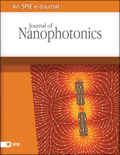
Journal of Nanophotonics
Illuminating the Future of NanotechnologyThe Journal of Nanophotonics, published by SPIE-SOC Photo-Optical Instrumentation Engineers, is an esteemed platform dedicated to advancing the field of nanotechnology through pioneering research in photonics. Since its inception in 2007, this journal has become instrumental in disseminating innovative findings and fostering collaborative discussions, especially in the domains of Condensed Matter Physics, Electronic, Optical and Magnetic Materials, and Nanoscience and Nanotechnology. Currently ranked within the Q3 category across these fields, it serves as a vital resource for academics, industry professionals, and students keen on exploring the multifaceted applications and implications of nanophotonic technologies. With its convergence set to continue until 2024, the journal offers a non-open-access model, ensuring rigorous peer-review standards and high-quality publications that contribute to the global body of knowledge.

Journal of Ovonic Research
Pioneering Research in Magnetic and Optical Materials.Journal of Ovonic Research is a distinguished publication dedicated to advancing the fields of electronic, optical, and magnetic materials. Published by VIRTUAL CO PHYSICS SRL, this journal offers a platform for researchers to share innovative findings and developments that push the boundaries of technology and materials science. With an ISSN of 1842-2403 and an E-ISSN of 1584-9953, it provides an important service to the academic community, particularly within Romania and beyond. Despite its recent inception in 2011, the journal has gained traction in the academic landscape, reflecting a Q4 quartile ranking in crucial categories such as Electronic, Optical and Magnetic Materials, as well as in Physics and Astronomy. The Scopus rankings further underscore its positioning, ranking within the 25th to 37th percentile across various disciplines, making it a valuable resource for professionals and students alike. Although the journal currently operates on a non-open access basis, it remains committed to exploring the latest advancements in materials science, encouraging interdisciplinary collaboration and fostering a deeper understanding of surface, coating, and film technologies. As the field evolves, Journal of Ovonic Research stands as a beacon for scholarly communication, bridging the gap between research and practical application.
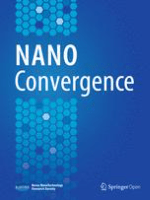
Nano Convergence
Advancing the frontiers of nanotechnology and materials science.Nano Convergence is a premier open access journal dedicated to the rapidly evolving fields of nanotechnology, materials science, and engineering. Published by SPRINGER, this journal has been at the forefront of interdisciplinary research since its inception in 2014, and is set to continue its journey until 2024. With an impressive impact factor and recognition as Q1 in both Engineering (miscellaneous) and Materials Science (miscellaneous) categories, Nano Convergence ranks among the top publications, listed as Rank #8 out of 307 in General Engineering and Rank #34 out of 463 in General Materials Science according to Scopus metrics. This journal provides a platform for researchers, professionals, and students to share pioneering studies that converge different disciplines within nanotechnology. With its commitment to open access, Nano Convergence ensures that cutting-edge research is readily available to the global community, fostering innovation and collaborative advancements in the field.

Solids is a distinguished peer-reviewed journal published by MDPI, dedicated to the comprehensive exploration of the properties, applications, and advancements in solid materials. Starting its journey in 2020, this Open Access journal provides a dynamic platform for researchers and professionals in the fields of physics, astronomy, materials science, and chemistry, enabling them to disseminate their findings to a global audience without barriers. With an emerging presence in the academic landscape, Solids has established a reputation reflected in its Scopus rankings, including a commendable position of #28 out of 81 in Physics and Astronomy and #83 out of 196 in Materials Science, demonstrating its impact and relevance within these vibrant fields. The journal's objectives extend to fostering interdisciplinary discussions and collaboration, making it an essential resource for those seeking to advance their understanding of solid materials and their innovative applications. Researchers and students alike are encouraged to contribute to this essential dialogue, engaging with the latest research and insights in solid-state science from around the globe.